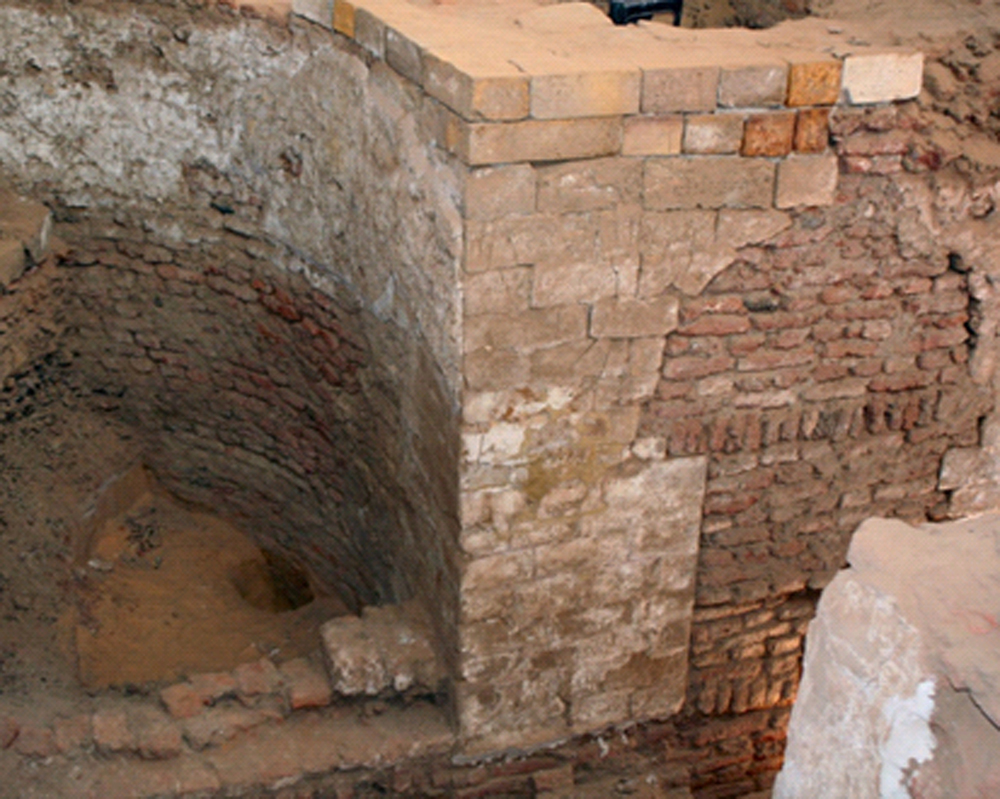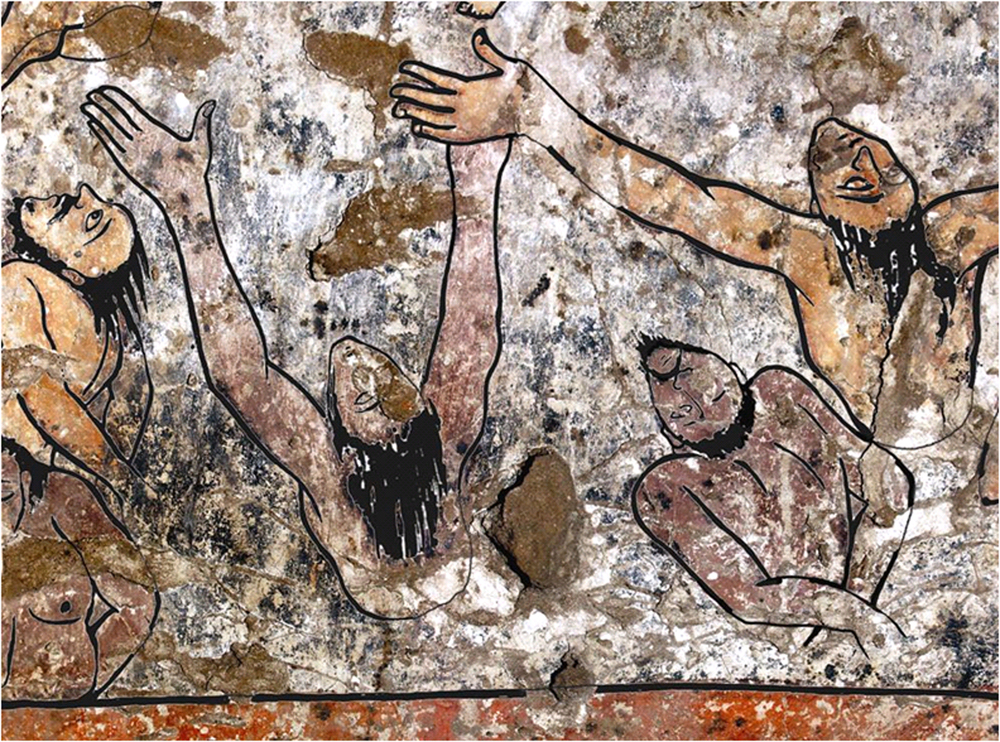Long Pilgrimages Revealed in Ancient Sudan Art

Excavations of a series of medieval churches in central Sudan have revealed a treasure trove of art, including a European-influenced work, along with evidence of journeys undertaken by travelers from western Europe that were equivalent to the distance between New York City and the Grand Canyon.
A visit by a Catalonian man named Benesec is recorded in one of the churches, along with visits from other pilgrims of the Middle Ages, according to lead researcher Bogdan Zurawski of the Institute of Mediterranean and Oriental Cultures of the Polish Academy of Sciences.
The discoveries were made at Banganarti and Selib, two sites along the Nile that were part of Makuria, a Christian kingdom ruled by a dynasty of kings throughout the Middle Ages.
The art there tells stories of kings, saints, pilgrims and even a female demon, said Zurawski, who presented his findings recently at the Royal Ontario Museum in Toronto.
Inside medieval churches
Zurawski said the most recent of the churches uncovered in Banganarti, built nearly 1,000 years ago, is unique. "It has no parallel in Nubia and elsewhere," he said. [See images of Banganarti church discoveries]
The church contains 18 square rooms, two staircases and, at its center, a domed area that probably contained holy relics. The team believes the building was dedicated to the archangel Raphael and was used for healing rituals. "The multitude of inscriptions addressed to this archangel are more than suggestive" that the church was dedicated to him, Zurawski said.
Get the world’s most fascinating discoveries delivered straight to your inbox.
Beneath this building lies a structure, built about 300 years earlier, which also appears to have been dedicated to Raphael. This lower church, as the archaeologists refer to it, contains a ninth-century mural depicting "the Harrowing of Hell," which shows Jesus visiting the underworld to rescue the firstborn. [See images of the lower church]
A Catalonian journey
The team uncovered numerous inscriptions at the two sites, many left by pilgrims visiting the churches in hopes of being healed.
One of the inscriptions at Banganartiis written in Catalonian and appears to have been inscribed sometime in the 13th or 14th century by the man named Benesec. It reads: "When Benesec came to pay homage to Raphael."
Zurawski told LiveScience that "Benesec" was a very popular name in 13th- and 14th-century southern France. This particular Benesec had probably traveled some 2,300 miles (3,700 kilometers) from southern France or northern Spain. The journey took him east across the Mediterranean Sea and far up the Nile into the interior of Africa.
The inscription and a Catalonian playing card found downriver by another team, which may or may not have been left by Benesec, were the only traces found of these visitors from Europe.
Zurawski said Benesec may have been a trader who, along with other Catalonians, received permission from the Mamluk rulers of Egypt to pass through their territory. "The Catalonians were granted trade privileges, trade rights, to exchange goods and to trade with Egypt, and apparently they also came to Nubia," he said.
Krzysztof Grzymski, a curator at the Royal Ontario Museum, said at the symposium that evidence of contact between central Sudan and the Mediterranean world goes back to antiquity. At the site of Meroë, which reached its peak around 2,000 years ago, Grzymski said, he studied the sculpture of a head that has Greek traits. "This head is clearly Hellenistic or Hellenized, and yet it certainly was made by local artists from Meroë."
The Harrowing of Hell
The team uncovered numerous works of art at Banganarti, among them the ninth-century painting of "the Harrowing of Hell."
"The masterpiece of lower-church painting, decoration, is this 'Harrowing of Hell'; it is absolutely unusual," said Zurawski. It shows "Jesus Christ just descended to hell to trample Hades, liberating the firstborn, who are shown naked. Also, the common dead are shown naked."
The dead are also shown in anguish. "The common dead [are] screaming, crying with outstretched fingers," said Zurawski. He said that the emotion of the dead, and the depiction of them and the firstborn being naked, were very odd.
"That is purely a European way of inscribing the Harrowing of Hell," he said. "In Byzantine tradition, the firstborn and the dead in the harrowing scene are shown in stiff hieratic postures, totally clothed."
King David … of Nubia
There are many other features of art and architecture at these two holy sites.
Banganarti contains several images of kings, most of them anonymous because of the lack of an accompanying inscription.
However, one exception shows a 13th-century ruler known as King David, possibly named after the biblical figure. An inscription, found nearby, reads: "O God of Michael [or "O Saint Michael"], cause Arouase to live through the savior of King David." Arouase appears to be a reference to a person.
Another work of art is an image of St. Damianos, a third-century physician who, with his brother Cosmas, practiced in Cilicia in southeastern Turkey. They were known asanargyroi, doctors who treated patients for free. During a series of Christian persecutions brought about by the Roman Emperor Diocletian, they were rounded up, tortured and beheaded.
Zurawski said the saint appears to have been held in particularly high regard at this site. For instance, one inscription mentions a wealthy person named Teita who came to Banganarti to mark Damianos' life.
The church image of Damianos' brother did not survive.
A female demon
The artwork is rich in both religious and mythological lore. For instance, at the same church the team discovered a depiction of Sideros, a female demon, naked and bound up while being trampled by St. Abbakyros, a medical saint, on a horse.
Sideros in medieval mythology was a demon that preyed on women during childbirth.
Another scene at Banganarti depicts the legend of a third-century Roman soldiernamed Mercurius who converted to Christianity and was executed for it.
"The Passio recounts that Mercurius lived under the emperors Decius and Valerian. ... He saw in a vision an angel who presented him with a sword, promising him victory and telling him not to forget his God," writes Christopher Walker in the book "The Warrior Saints in Byzantine Art and Tradition" (Ashgate publishing, 2003). (Passio is a Latin word for passion.)
When he refused the emperor's invitation to make an offering to Artemis, Mercurius refused, professing his new faith. He was tortured and killed.
According to the picture discovered at Banganarti, Mercurius reappeared as a sort of spirit almost 100 years later, after Christianity had been declared legal throughout the Roman Empire.
At the time Rome had an emperor, Julian, who made offerings to the old Roman gods instead of observing Christian rites. The emperor was campaigning in the Middle East against the Persians when, according to legend, Mercurius appeared and stabbed him with a spear, killing him.
"On the south wall [at Banganarti there is] a very interesting mural representing Saint Merkurios killing Emperor Julian the Apostate," said Zurawski. An image of the praying Virgin Mary is also shown in the scene.
A blind visitor
Another interesting image is that of an apparently blind individual who visited Banganarti in hopes of a cure, possibly because the church was dedicated to the archangel known to be a patron of the blind.
"One of the ophthalmological patients who came to Banganarti with eye problems was not Christian but was Muslim," Zurawski said.
His name was written as "Deif Ali," Arabic for "Ali the guest." In a drawing of him in the church, he is shown with a walking stick and what looks like a bag. He wears a kilt-like dress and appears to be struggling to get his footing right. “His blindness is shown in the way he was painted,” said Zurawski.
Selib
A few miles to the east of Banganarti is Selib, which holds four churches, built one on top of the other. They date from the sixth century, a time when people in Nubia were beginning to convert to Christianity, and the buildings were in use throughout the Middle Ages. [See images of medieval church Selib]
There are also remains of Meroitic columns and reliefs dating to around 2,000 years ago, when the city of Meroë was the center of an empire that stretched from southern Egypt to central Sudan.
Work at the site began in 2008 and resumed, after a brief hiatus, in 2010. Much remains to be done, but the team already has unearthed some interesting finds, among them a baptistery dating back nearly 1,500 years.
The team also found an inscription that indicates that one of the churches was built by a seventh-century king named Zacharias. It reads, "Zacharias basileus Mena hagios," which means that the king dedicated the church to St. Mena, a third-century Egyptian hermit.
Nearby, the team encountered an intriguing mystery. The archaeologists excavated a well and found the bottom to be beautifully decorated.
"At the depth of 5 meters, the regular bond of brick, the so-called English bond, is interrupted," said Zurawski during his museum lecture. In place "a zig-zag pattern made with oven-fired bricks" appears.
"There is no technical, structural reason for such a changing of the pattern of the brick. The only reason is aesthetical, but what aesthetics stand for in a well at the depth of five meters, I cannot ascertain," he said.
Only a few miles east of Banganarti, the inhabitants apparently decided that even the bottom of a well should be beautiful.

Owen Jarus is a regular contributor to Live Science who writes about archaeology and humans' past. He has also written for The Independent (UK), The Canadian Press (CP) and The Associated Press (AP), among others. Owen has a bachelor of arts degree from the University of Toronto and a journalism degree from Ryerson University.





